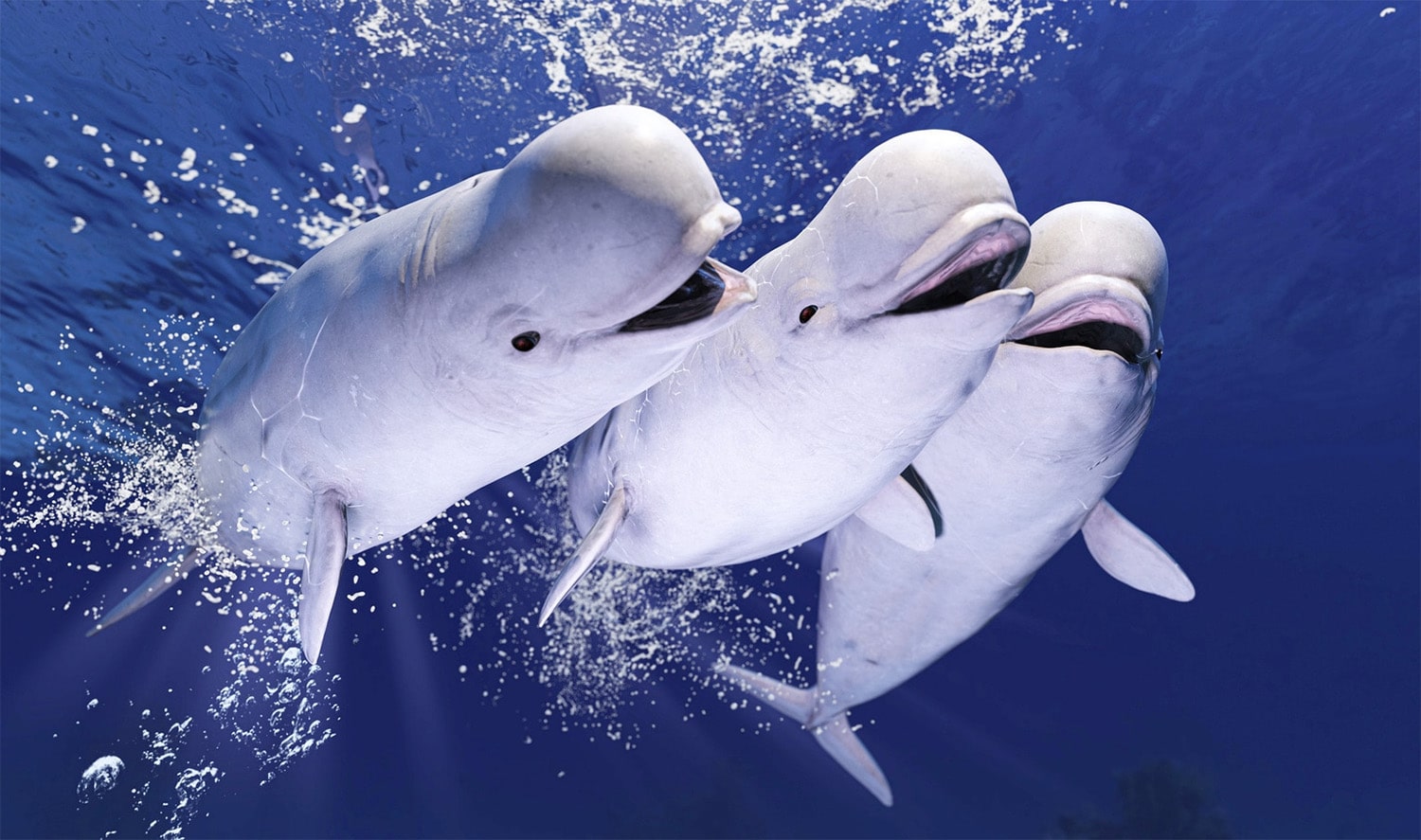
34 interesting facts about beluga whales
- 👁️ 259
Beluga whales, known for their distinctive color and high-pitched twitter, are among the most charismatic and easily identifiable marine mammals. Often called the “canaries of the sea” because of their frequent vocalizations, belugas are highly sociable creatures that inhabit the cold waters of the Arctic and sub-Arctic regions. Their adaptability to their environment and unique behaviors have intrigued scientists and wildlife enthusiasts alike. These whales play a crucial role in the marine ecosystem, and their conservation has become increasingly important as their habitats face environmental threats.
- Beluga whales are predominantly found in Arctic and sub-Arctic waters.
- The scientific name for the beluga whale is Delphinapterus leucas.
- Adult belugas can grow up to 18 feet in length.
- They are known for their pure white color, which they develop around five years of age.
- Beluga whales have a distinctive melon-shaped head, which is flexible and allows them to make various facial expressions.
- Unlike many other whale species, belugas can turn their necks because their cervical vertebrae are not fused.
- Belugas are highly vocal and use a variety of clicks, whistles, and clangs to communicate.
- They use echolocation to navigate and hunt in their often dark and murky environments.
- Belugas can dive to depths of up to 800 meters when searching for food.
- Their diet mainly consists of fish, crustaceans, and worms.
- The gestation period for a beluga whale is about 14 to 15 months.
- Newborn belugas are gray and gradually turn white as they mature.
- Belugas are often seen in large pods, which can consist of up to several dozen individuals.
- These pods are thought to be structured by age and gender.
- Beluga whales migrate seasonally, moving to warmer waters in the summer to feed and give birth.
- They have a thick layer of blubber that helps them maintain their body heat in frigid waters.
- Predators of beluga whales include orcas and polar bears.
- Beluga whales can live up to 50 years in the wild.
- They are considered near threatened by the International Union for Conservation of Nature (IUCN).
- Belugas play a significant role in the cultures of indigenous peoples in the Arctic.
- Climate change and the melting of sea ice pose significant threats to their habitat.
- Pollution, particularly from heavy metals, can accumulate in their bodies and affect their health.
- Noise pollution from ships and industrial activities can interfere with their echolocation signals.
- Beluga whales are known to occasionally hybridize with other species, such as the narwhal.
- They are capable of swimming backwards.
- Beluga populations in the Saint Lawrence River are among the most endangered.
- Their white color serves as camouflage in their icy, often snowy environment.
- Belugas were once heavily hunted for their blubber, meat, skin, and oil.
- Today, they are protected under various international laws and agreements.
- Captive beluga whales are popular attractions in some aquariums around the world.
- Research on belugas has helped scientists understand more about their physiology and complex communication.
- Conservation efforts include habitat protection, pollution control, and careful management of wildlife viewing.
- Belugas have been observed using tools, such as using water to manipulate objects.
- They are known for their curiosity towards human-operated vehicles and divers.
In conclusion, beluga whales are fascinating marine creatures with unique physiological and social traits that endear them to both researchers and the general public. Their ability to adapt to the harsh conditions of the Arctic, combined with their sociable nature and communicative prowess, highlights the complexity of marine life. However, they face numerous challenges from environmental changes and human activities. Protecting these remarkable creatures requires ongoing effort and cooperation across international borders, emphasizing the importance of marine conservation in maintaining the biodiversity of our planet.
Beluga whales, known for their distinctive color and high-pitched twitter, are among the most charismatic and easily identifiable marine mammals. Often called the “canaries of the sea” because of their frequent vocalizations, belugas are highly sociable creatures that inhabit the cold waters of the Arctic and sub-Arctic regions. Their adaptability…